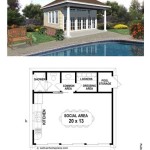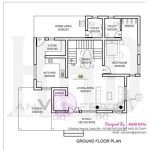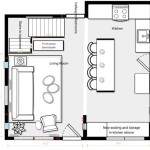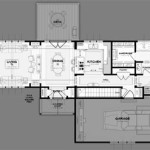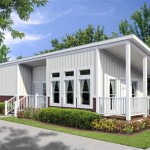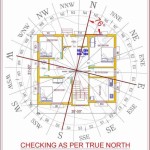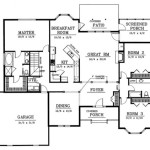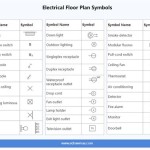Navigating the Challenges and Opportunities of Front Sloped Lot House Plans
Building a house presents numerous architectural and design considerations. When the building site features a front slope, these considerations become even more complex. Successfully designing a house for a front sloped lot requires careful planning, innovative designs, and a thorough understanding of both the limitations and advantages that the topography presents. This article explores the nuances of front sloped lot house plans, delving into design strategies, cost implications, and the aesthetic possibilities that arise from this unique building environment.
A front sloped lot is defined by its downward slope towards the street. This characteristic distinguishes it from back sloped or side sloped lots, each presenting its own set of design challenges. The slope directly impacts crucial aspects such as accessibility, landscaping, drainage, and the overall visual appeal of the home. Properly addressing these issues during the planning phase is paramount to creating a functional and aesthetically pleasing residence.
Understanding the Unique Design Considerations
Designing a house for a front sloped lot involves a strategic approach to several key areas. These areas directly influence the functionality, cost-effectiveness, and aesthetic success of the project. Ignoring these considerations can lead to structural issues, drainage problems, and ultimately, dissatisfaction with the final product.
First and foremost, accessibility is a significant concern. The slope necessitates careful planning of entry points. A long driveway leading down to the house might be necessary, and the gradient must adhere to local regulations and safety standards. In some cases, switchbacks or terraced landscaping might be employed to mitigate the steepness. Alternatively, the design could incorporate a bridge or elevated walkway from street level to the main entrance of the house. Choosing the right access strategy is crucial for the homeowner's convenience and future resale value. Careful consideration must also be given to accessibility for individuals with mobility issues, potentially requiring ramps or elevators depending on the severity of the slope.
Drainage is another critical factor. Front sloped lots naturally direct rainwater towards the house, potentially causing water damage to the foundation and surrounding landscape. Effective drainage systems are essential to redirect water away from the structure. This often involves installing French drains, swales, and strategically placed downspouts. The local soil type and rainfall patterns should be assessed to determine the most appropriate drainage solutions. Impermeable surfaces, such as concrete driveways, can exacerbate drainage issues, thus requiring careful planning and potentially the use of permeable paving materials.
The foundation design is invariably affected by the slope. Options range from a partial or full basement to a crawl space or slab-on-grade construction. A basement can provide valuable living space but requires extensive excavation and waterproofing to prevent moisture intrusion. A crawl space is a less expensive alternative but offers limited storage. A slab-on-grade foundation might be suitable for milder slopes but risks water accumulation if not properly engineered. The choice of foundation will impact the overall cost and structural integrity of the house.
Finally, the visual impact of the house on the landscape must be carefully considered. The design should integrate seamlessly with the natural surroundings, minimizing the visual disruption caused by the slope. This can be achieved through strategic landscaping, terracing, and the use of natural building materials. The house should appear to nestle into the hillside rather than awkwardly imposed upon it. The architectural style should also complement the topography and surrounding environment, enhancing the overall aesthetic appeal.
Exploring Design Styles and Architectural Approaches
A front sloped lot offers a unique canvas for creative architectural designs. Several styles lend themselves particularly well to this type of topography, allowing architects to maximize the potential of the site while addressing the challenges it presents.
The split-level design is a popular choice for front sloped lots. This style features staggered floor levels, creating a natural transition between the different sections of the house. The split-level design minimizes excavation and allows for efficient use of space. It also offers the advantage of separating living areas from bedrooms, providing greater privacy and noise reduction. The varying levels can be integrated into the slope, with the lower level partially buried and the upper level offering views of the surrounding landscape.
Another suitable style is the daylight basement design. This approach utilizes the slope to create a basement that is partially above ground, allowing for natural light and ventilation. The daylight basement can be used as a living area, recreation room, or home office, effectively expanding the usable square footage of the house. Large windows and a walk-out entrance enhance the functionality and appeal of the basement. This design strategy is particularly well-suited for front sloped lots, as it maximizes the use of the existing topography.
Terraced houses are another option, using retaining walls to create a series of stepped platforms on the slope. Each platform can accommodate a different section of the house, creating a cascading effect. This design approach minimizes excavation and allows for the creation of outdoor living spaces, such as patios and gardens. Terraced houses often feature multiple levels of outdoor access, providing stunning views and seamless integration with the surrounding landscape. Retaining walls should be designed to be visually appealing, incorporating natural materials and landscaping to blend with the environment.
Contemporary designs often embrace the slope by incorporating cantilevered structures that extend over the hillside. This creates a dramatic effect and allows for panoramic views. Cantilevered designs require careful engineering and structural support, but they can result in a visually striking and innovative home. These designs often feature large windows and open floor plans, maximizing natural light and creating a sense of spaciousness.
Regardless of the chosen style, the design should prioritize energy efficiency and sustainability. Incorporating passive solar design principles, such as orienting the house to maximize sunlight exposure, can reduce heating and cooling costs. The use of sustainable building materials, such as reclaimed wood and recycled content insulation, can minimize the environmental impact of the construction process.
Addressing Cost Considerations and Maximizing Value
Building on a front sloped lot can be more expensive compared to building on a flat site. The increased costs are primarily due to the need for additional excavation, retaining walls, and specialized foundation work. However, with careful planning and strategic design choices, it is possible to manage costs and maximize the value of the property. Furthermore, the unique design opportunities presented by a front sloped lot can potentially increase the resale value of the home.
Excavation is a significant cost factor. The amount of excavation required will depend on the severity of the slope and the design of the house. Minimizing the amount of excavation can significantly reduce costs. This can be achieved by choosing a design that conforms to the natural topography of the site. For instance, a split-level design requires less excavation compared to a full basement.
Retaining walls are often necessary to stabilize the slope and create usable outdoor spaces. The cost of retaining walls will depend on their height, length, and materials used. Opting for cost-effective materials, such as concrete blocks or treated timber, can help to reduce expenses. Proper drainage behind the retaining walls is essential to prevent water damage and ensure their long-term stability.
Foundation work is another major cost component. The choice of foundation will impact the overall construction budget. A full basement is generally the most expensive option, followed by a crawl space and then a slab-on-grade foundation. However, the suitability of each foundation type will depend on the soil conditions and the design of the house. Consulting with a structural engineer is crucial to determine the most appropriate and cost-effective foundation solution.
Landscaping can also contribute to the overall cost. However, strategic landscaping can enhance the aesthetic appeal of the property and increase its value. Using native plants, which require less maintenance and watering, can reduce landscaping costs. Terracing the slope with natural stone or wood can create visually appealing outdoor spaces. Integrating the landscaping with the house design can create a seamless transition between the interior and exterior.
To maximize value, it is important to focus on quality construction and energy efficiency. Investing in high-quality building materials and energy-efficient appliances can reduce long-term operating costs. Properly insulating the house and installing energy-efficient windows can minimize heating and cooling expenses. Incorporating renewable energy sources, such as solar panels, can further reduce energy consumption and increase the value of the property.
Finally, working with an experienced architect and contractor is essential. An experienced architect can help to develop a design that takes full advantage of the site's potential while minimizing costs. A reputable contractor can ensure that the construction is completed to a high standard and within budget. Obtaining multiple bids from different contractors is recommended to ensure competitive pricing.
In conclusion, designing and building a house on a front sloped lot presents both challenges and opportunities. By carefully considering the design considerations, exploring appropriate architectural styles, and addressing cost implications strategically, it is possible to create a functional, aesthetically pleasing, and valuable home.

House Plans For A Sloped Lot Dfd Blog

Plan 51696 Traditional Hillside Home With 1736 Sq Ft 3 Be

Sloping Lot Contemporary Style House Plan 1100 Sundown

Modern House Plan Sloping Lot Contemporary Style 5590 Vista

Plan 69649am Northwest House With Drive Under Garage Sloping Lot Plans

For The Front Sloping Lot 8131lb Architectural Designs House Plans

Hillside And Sloped Lot House Plans

Modern House Plan For A Side Sloping Lot

034h 0300 Mountain House Plan Designed For A Front Sloping Lot Plans Craftsman Style

Narrow Lot House Plans Floor

